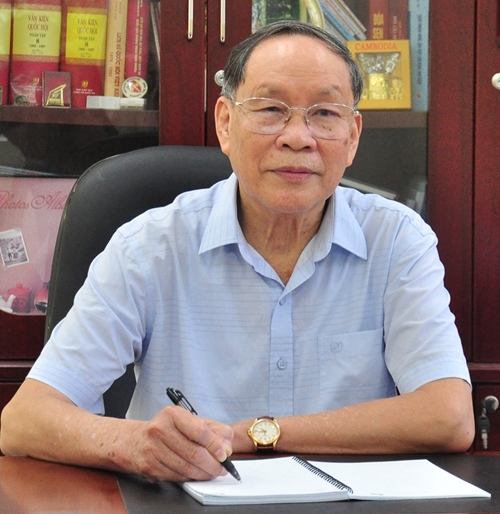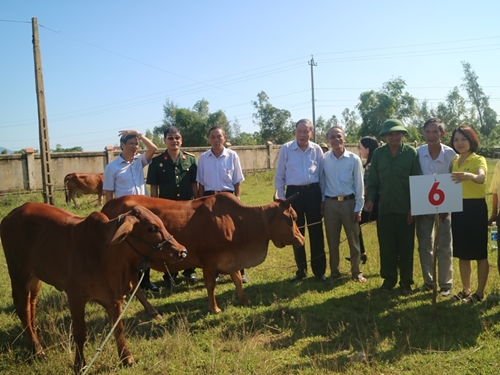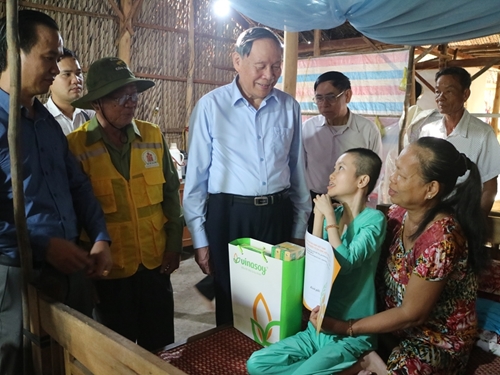    |
 |
|
Senior Lieutenant General Nguyen Van Rinh |
Reporter: Sir, why the AO disaster is still an unrelenting obsession of Vietnamese and peace-loving people across the world?
Sr. Lt. Gen. Nguyen Van Rinh: On August 10, 1961, U.S. aircraft undertook the first AO spraying along Road 14 from Kon Tum town to Dac To, beginning the “Operation Ranch Hand” that lasted for 10 years and caused the AO disaster in Vietnam. Statistically, from 1961 to 1971, the U.S. armed forces sprayed about 80 million liters of toxic chemicals - 61 percent of which, containing 366kg of dioxin, was AO - on 3.06 million ha of land in Southern Vietnam.
About 4.8 million Vietnamese people have been exposed to AO, and more than 3 million others who are their second, third, and even fourth generations are still suffering from the pain and losses. Many of them are dead and others are struggling with serious diseases. Many women cannot enjoy the happiness of being a wife or a mother. Many children were born with deformities...
Reporter: What are the policies of the Party and Government to address the AO consequences over the past time?
Sr. Lt. Gen. Nguyen Van Rinh: Understanding the serious impacts of toxic chemicals on human beings, the Vietnamese Party and Government have implemented numerous policies to assist AO/dioxin victims. On July 5, 2004, the Prime Minister issued Decision No.120/2004/QD-TTg giving some regulations concerning war participants and their children infected by toxic chemicals that the U.S. armed forces used in the war in Vietnam.
Under the direction of the Politburo and the Prime Minister, the Vietnam Association for Victims of AO/dioxin (VAVA) was established on January 10, 2004. The establishment of VAVA is a significant step, showing great attention of the Party and State to surmounting the consequences of post-war toxic chemicals. The VAVA now has 63 chapters in provinces and cities nationwide with over 400,000 members.
    |
 |
|
Sr. Lt. Gen. Nguyen Van Rinh presents breeding cattle to AO victims in Quang Binh province. |
The association’s goals are to help AO/dioxin victims and secure their rights, contribute to addressing consequences of war-left toxic chemicals in Vietnam and represent them to domestic and international organizations. The association has overcome difficulties to fulfill its missions assigned by the Party and State, provided timely advice for the authorities at all levels, and collaborated well with the local sectors and agencies to strengthen supports for AO/dioxin victims.
The “Actions for Vietnamese AO/dioxin victims” movement launched by the Vietnam Fatherland Front (VFF) Central Committee has contributed to gathering care and support of the community for the victims. VAVA’s affiliated agencies have mobilized over VND 2,660 billion for assisting AO/dioxin victims, particularly in building 6,750 charity houses, presenting 11,900 scholarships, giving away 3,860,250 gifts, and maintaining the operation of 26 social protection centers for AO/dioxin victims.
Reporter: Can you tell us more about the struggle for justice of Vietnamese AO/dioxin victims over the past time?
Sr. Lt. Gen. Nguyen Van Rinh: The external relations activities of VAVA have been constantly expanded. Particularly, the association receives hundreds of international delegations and friends every year and is keeping in touch with thirty international organizations as well as research institutes at home and abroad. Thanks to its international cooperation, VAVA has raised millions of U.S. dollar to support AO/dioxin victims.
Regarding the struggle for justice of Vietnamese AO/dioxin victims, the association has sued 37 U.S. companies for providing toxic chemicals for U.S. troops for use during the war in Vietnam. In addition, many individuals and organizations worldwide have joined the struggle such as the historic lawsuit filed by French citizen Tran To Nga against multinational companies for producing and selling toxic chemicals sprayed by U.S. armed forces in the war in Vietnam.
The struggle has not achieved the desired results; however, it has drawn the attention and support of the international community and had initial positive impacts on the attitude and action of the U.S. Government towards the settlement of the consequences of war-left toxic chemicals and providing humanitarian assistance for people with disabilities, regardless of the cause, in Vietnam.
    |
 |
|
Sr. Lt. Gen. Nguyen Van Rinh presents a gift to the family of an AO victim in Ca Mau province. |
Reporter: Currently, the settlement of AO/dioxin consequences, especially the care for the victims, has new requirements. So what are the major missions that VAVA’s chapters have to focus on?
Sr. Lt. Gen. Nguyen Van Rinh: They have to enhance information dissemination related to the Party’s guidelines and the State’s policies on overcoming consequences of post-war toxic chemicals. Particularly, they should embrace Directive No.43-CT/TW issued by the Party Central Committee's Secretariat on May 14, 2015 on enhancing the Party’s leadership over the settlement of the consequences of war-left toxic chemicals used by the U.S. armed forces in the war in Vietnam and implementing policies for national contributors and people with disabilities.
In addition, they should promote the “Actions for Vietnamese AO/dioxin victims” movement to mobilize the community’s support and donation to enhance the effectiveness of the care for AO/dioxin victims.
Relevant agencies should study and give advice to higher levels on completing policies for AO/dioxin victims, contributing to upholding their rights defending and legitimate interests. All chapters of VAVA should collaborate with functional agencies to ensure rights for war participants affected by toxic chemicals.
They need to be persistent and continue to fight by means, forms and measures consistent with the foreign policies of the Party, State and international law.
Impacts of post-war toxic chemicals are still severe and long-lasting; therefore, each individual and group should join hands to take care of AO/dioxin victims and assist them in overcoming hardships and reintegrating into the community. It is not only a tradition of the Vietnamese people but also the responsibility of the whole society.
Reporter: Thank you very much!
Translated by Trung Thanh